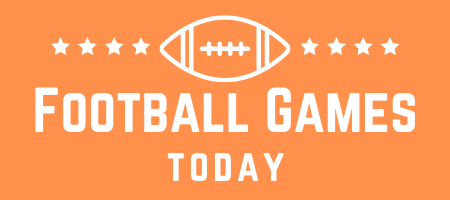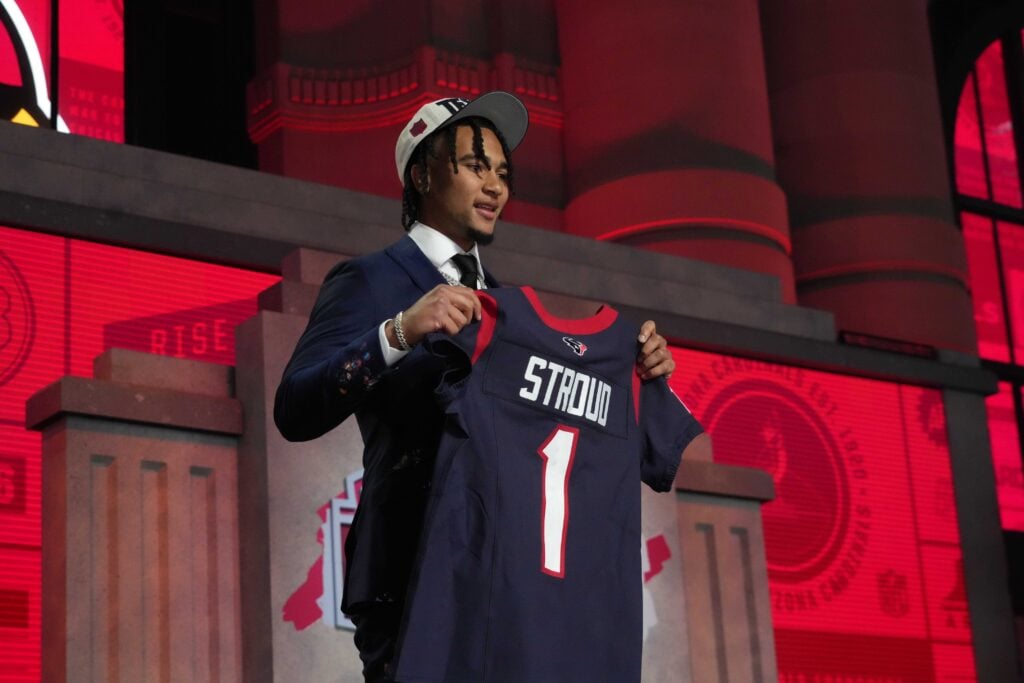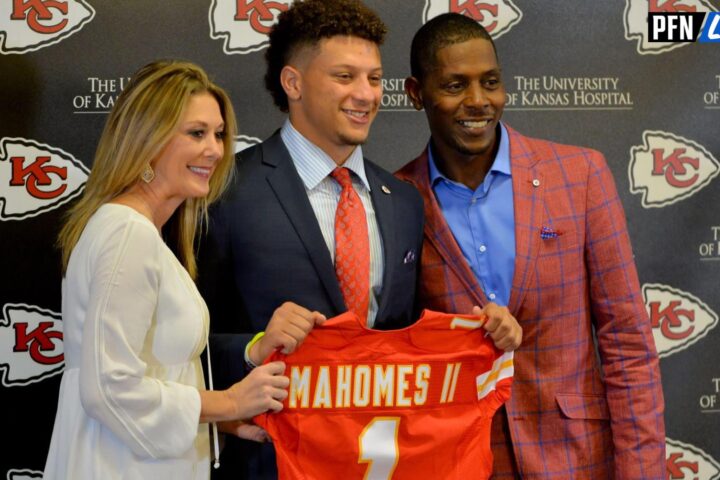Over a month before the 2023 NFL Draft commenced in Kansas City, PFN Draft Analyst Ian Cummings was directed to begin working on the potential 2024 NFL Draft class. NFL Draft analysis is a non-stop affair. Sometimes, especially now that players in college football have been granted extra years of eligibility, we watch a player for three whole summer cycles before they ever enter the NFL Draft.
The Effects of Early Mock Drafts and Big Boards
The draft cycle never quits. After the draft ends, Sunday morning, your football outlet has to produce a 2024 NFL Mock Draft. Ian’s work is excellent, but not every outlet — especially those who don’t employ full-time staff like Pro Football Network does — is capable of writing a reasonable mock draft so soon after the previous NFL Draft ends.
And while every industry has egos — and writing, podcasting, and other forms of content creation are no exception — our actions impact the draft landscape, even if only a little.
In the end, things usually work themselves out. But the consensus big board that PFN’s own Arif Hasan puts together, among others, carries significant weight within the NFL Draft media landscape. There are also multiple websites that collect mock draft data — that data includes practically everybody that creates a mock draft and publishes it online in some way, whether those writers are qualified or not.
And where do the inexperienced or not-so-plugged-in media draft analysts get their lists of who to watch? They create them from an early big board or mock draft from their favorite big-time media analyst. A few of those media analysts can change the entire consensus with a single tweet.
We’re already seeing some very interesting results. Senior Bowl President Jim Nagy has been incredibly transparent for years regarding the Senior Bowl’s process.
“Already seeing names popping up in mock first rounds that @seniorbowl has late-round/PFA grades on based off junior tape—and all preliminary grades are glass half-full,” Nagy tweeted. “We don’t pretend to have all answers but there’s huge difference between first-rounders and UDFAs.”
Former NFL offensive line coach Paul Alexander replied to that tweet as well.
“Yes,” Alexander replied. “And then when these kids don’t become first rounders (or high picks a year later) …. They (including their parents) will blame their agents and coaches and anyone else involved. Mock drafts done before January often do more harm than good.”
MORE: 2024 FREE NFL Mock Draft Simulator With Trades!
I love the NFL Draft and all of the coverage surrounding it. I got my start in the industry because I happened across Dane Brugler, Bryan Broaddus, Jeff Cavanaugh, and Kevin Turner talking about the draft on 105.3 The Fan in Dallas back in 2016. I was hooked instantly and have spent a lot of time in a cave-like environment, willingly watching some safety from South Dakota State barely do anything of note for 60 defensive snaps.
And that is the positive side of the coin. The NFL Draft is amazing because of the passion fans and analysts have for it. Having these mock drafts and big boards is how die-hard fans and media analysts create their watchlists.
There are fans far and wide who put in the work watching NFL Draft prospects purely out of the love they have for this game and the desire to be a more knowledgeable fan. Without these mock drafts and lists, they wouldn’t know where to start.
It also gives the more casual fan an idea of who to keep an eye on once the college football season kicks off. How will Iowa CB Cooper DeJean fare against Ohio State’s duo of incredibly talented wide receivers? Prospect matchups like that make the game itself more interesting. Not only are the players competing to help win a football game for their team, but they’re matched up against other potential NFL talent, which makes that particular matchup job interview-adjacent.
But there needs to be accountability associated with this. Writers must have the guts to tell their superiors that they’re not comfortable with certain topics. They should not and cannot simply run with what the masses are saying just to catch a few page views.
The Matthew Effect
Mock drafts will have players in the first round until January that will end up going undrafted in April. That’s part of the business. We all have our hits and misses. Many of us don’t learn about medical complications regarding prospects until incredibly late in the game.
But these early mock drafts and big boards have power. They cultivate biases. The “Matthew Effect” gets its name from Matthew 25:29 in the Bible.
“For unto every one that hath shall be given, and he shall have abundance; but from him that hath not, shall be taken away even that which he hath.”
In other words, the rich get richer. While the Matthew Effect, or “cumulative advantage,” originated to describe the lack of meritocratic process in science, a tweet from Mark Jarvis sparked this entire thing. But the way he described it sufficed just fine.
“One thing to keep in mind with the ‘too early’ mock drafts is that the starting point rankings for players can have an outsized effect for consensus thru process,” Jarvis tweeted.
“If a player gets mocked top 10-20 in a few early mocks it starts him off high & more eyes on him (which = more mocks). It’s not necessarily always a result of the player’s inherit abilities, but instead the Matthew Effect (think hit songs getting more popular & snowballing on radio – accumulated advantage). Lack of depth, expertise, & independent judgment it can send consensus into bad territory.”
It’s monkey see, monkey do, and fake it until you make it. A media member sees a player’s name on an early big board and prioritizes giving that player a watch and creating an impression. That will lead them to put that player in more subsequent mock drafts, and that cycle can continue for nearly a whole cycle.
We live in an age of information. Prospects, if they choose to peruse social media or Google, will inevitably see these mock drafts and big boards. And that could artificially inflate their ego and influence their pending draft declaration decision.
Inequality and Unpredictability in an Artificial Cultural Market
This study was done by Matthew K. Salganik, Peter Sheridan Dodds, and Duncan J. Watts in 2006 and helps us explain things even further.
They had 14,341 participants download previously unknown songs. They were then told to rank 48 songs using star ratings from one to five. There were two worlds for the experiment. One world where the participants knew how things had been ranked prior to them and one that was blind.
If participants liked a song enough they could download it, which is how Salganik, Dodds, and Watts measured the bands’ “success.” However, it’s also true that there was a strong correlation between a high-star rating and a song being downloaded.
MORE: 2024 NFL Draft Prospect Watchlist
Of the total participants, 20% fell under the independent condition. Meanwhile, eight groups of 10% became part of eight different social influence worlds. In the end, they found that knowing what others did before the subject had an influence on how that individual rated the song.
Think of it like this. Say we at PFN ranked a player at 17 on the Mock Draft Simulator. It’s very likely that he’s selected in the first round of a mock draft fairly often when we look at user-selected mock draft data.
But if we took that same player and dropped them to 200, his selection rate would plummet to a microscopic number. His individual skill did not change in the slightest. Only his priority in the mock draft rankings changed.
It’s All Part of the Puzzle
The NFL Draft Advisory Board exists to give potential NFL Draft prospects an idea of what they should do as underclassmen. It’s comprised of NFL GMs and personnel directors from across the league as well as BLESTO and The National, the two sanctioned scouting services the NFL uses.
They used to provide grades from Round 1 to after Round 3. However, so many underclassmen that declared weren’t drafted in 2014 (37%) that the league changed the way they do it. Now they only offer Round 1 and Round 2 grades, or they suggest the prospect returns to school.
Over the years, the NFLDAB has been incredibly accurate. Since 2012, they’ve handed out 221 first- or second-round grades, and they’ve hit on 192 of them. That’s an 86.9% success rate.
Of the 165 players given a back-to-school grade in 2022, 30 players decided to declare anyways. Of the 30, 14 went undrafted, and only seven of the 30 were drafted before Day 3.
“We want the student-athlete to make an informed decision,” said Troy Vincent, Sr. Executive Vice President of NFL Football Operations. “Use our resources and make an informed decision. Each institution has those resources for every prospect and every head coach. The numbers and the facts speak for themselves.”
An Open Letter to NFL Draft Prospects
So, potential NFL Draft prospects…
We do our best. Some members of the media are very good at our jobs evaluating potential NFL talents. Others lack the understanding necessary to make informed decisions. Others… well, they just don’t know ball, no matter how hard they try.
While some in the media are likely better than those working in the NFL and for one of the two sanctioned scouting organizations, the ultimate reality is that their consensus is more important regarding your future than the media’s consensus.
They have all the information, outside of what may arise at the NFL Combine medical examinations and unforeseen off-the-field incidents.
Do not let the media sway your decision on whether to declare for the NFL Draft prematurely — use the insight and analysis as a small part of the puzzle. The bigger piece of the puzzle — the one you should put the most stock into — are those inside the NFL, the sanctioned scouting organizations, and your coaches.
———
Note: A special thanks to Mark Jarvis (@jarvisscouting), whose tweet sparked this piece and who helped me flesh out countless ideas throughout.




